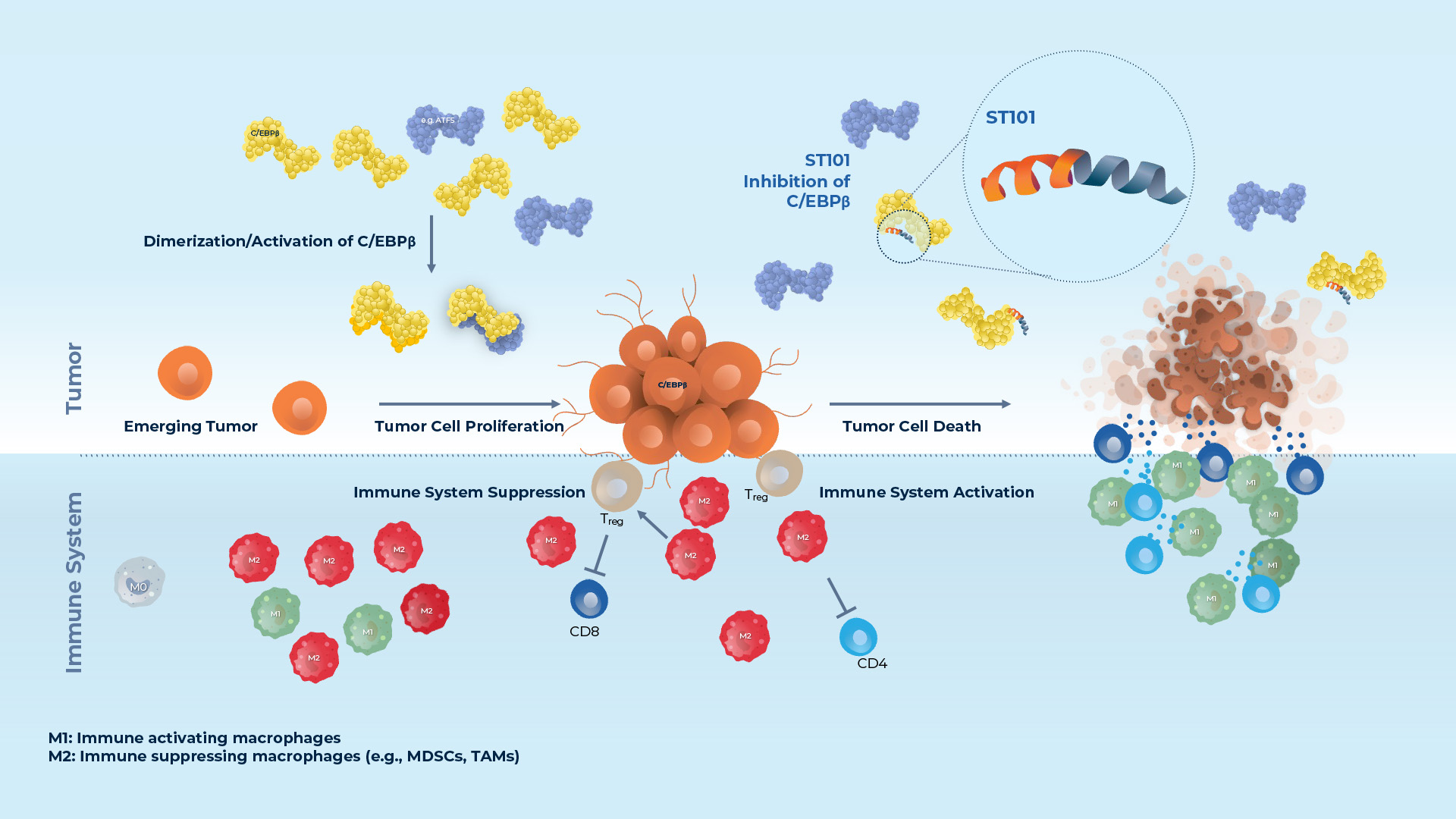Target Overview – C/EBPβ
C/EBPβ is a development stage transcription factor that drives the expression of:
- BIRC, BCL proteins: survival
- ID proteins: tumorigenesis
- MMP proteins: epithelial–mesenchymal transition (EMT)
- Cyclins: proliferation
- IL6: immunosuppression
ST101 Mechanism of Action
Inhibition of C/EBPβ with ST101:
- Drives C/EBPβ to proteasome
- Induces tumor cell death
- Creates a pro-inflammatory tumor microenvironment
Novel I/O Target:
We have generated data suggesting that ST101 repolarizes macrophages from M2 immunosuppressive (e.g., MDSCs, TAMs) to M1 pro-immune. We are exploring combinations with I/O molecules such as check point inhibitors.

ST101 Program Overview
ST101, a first-in-class antagonist of C/EBPβ, is currently being evaluated in the Phase 2 portion of an ongoing Phase 1-2 clinical study in patients with advanced unresectable and metastatic solid tumors (NCT04478279).
ST101-101 is an open-label, two-part, Phase 1-2 dose-finding study designed to determine the safety, tolerability, PK, PD, and proof-of-concept efficacy of ST101 in patients with advanced solid tumors. The study consists of two phases: Phase 1 dose escalation/regimen exploration and Phase 2 expansion.
In the ongoing dose escalation study, ST101 has demonstrated clinical proof-of-concept with a durable RECIST 1.1-confirmed partial response (PR) in a patient with cutaneous melanoma and evidence of long-lasting stable disease in several additional patients. In the ongoing Phase 2 dose expansion part of the study, ST101 has demonstrated clinical proof-of-concept with a confirmed partial response in a patient with recurrent GBM.
BioAce is actively enrolling patients with GBM, metastatic cutaneous melanoma, locally advanced or metastatic hormone-receptor positive breast cancer and castration-resistant prostate cancer. ST101 has been granted Fast Track designation for recurrent GBM and advanced cutaneous melanoma in patients who have disease progression on or after anti-PD-1/anti-PD-L1 therapy, as well as orphan designations from the FDA for advanced melanoma, glioma and AML, and from the European Commission for the treatment of glioma.
